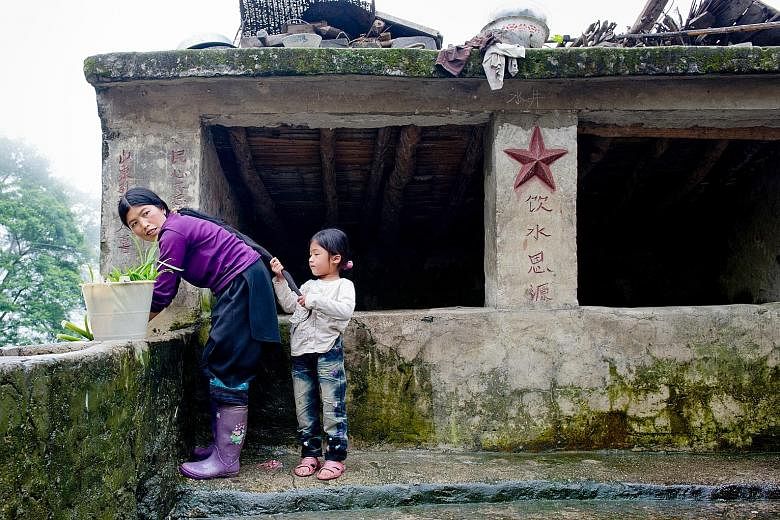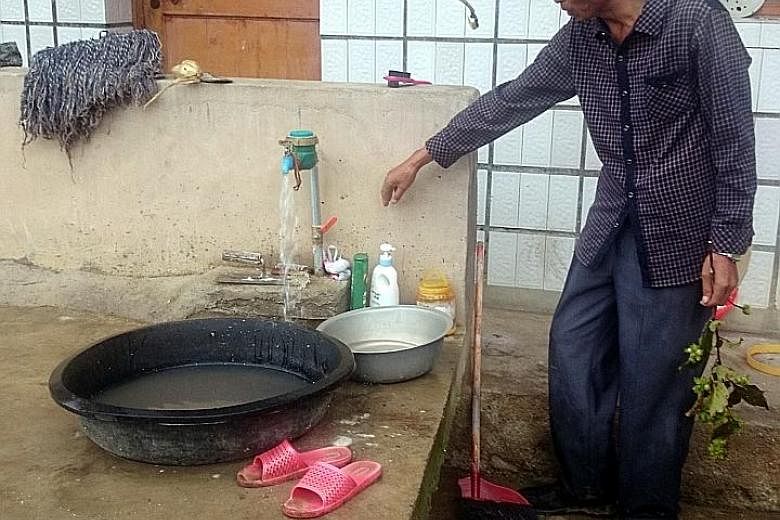China has a water crisis. Almost 20 per cent of the world's population live in the country, but it has only 7 per cent of the world's fresh water.
This means each Chinese person has much less fresh water to use every year, compared with people in most other countries.
Beijing, the capital city, is not spared. According to Xinhua news agency, the city's average annual rainfall of 500mm can provide water for only a population of 12 million. But more than 20 million people live in the city.
On average, every Beijing resident has access to only 100 cubic metres of water annually - enough water to fill only 4 per cent of an Olympic-size swimming pool.
In late 2014, the South-North Water Diversion Project went operational, channelling water from the south to the north.
Despite the constant flow of water from the south, Dr Pan Anjun, deputy director-general of the Beijing Water Authority, cautioned recently that Beijing remained highly water-stressed due to its natural arid conditions and the chronic shortage over the years.
Situations elsewhere across the nation are equally challenging. A third of the water in the rivers and more than two-thirds of the water in the lakes is undrinkable, said the Ministry of Water Resources.
Natural disasters, such as floods and droughts, and man-made issues like pollution further exacerbate the problem as the country industrialises and urbanises.
Every summer since 2008, the Yellow Sea near Qingdao in eastern Shandong province turns green with algae. In 2013, the algae covered 28,000 sq km, almost 40 times the size of Singapore. The algae was said to be linked to the discharge of fertilisers and nitrogen-rich sewage into the sea.
In the same year, drinking water in Shanghai came under threat due to illegal dumping of some 16,000 dead pigs in the Huangpu River that supplies water to the city.
The Yangtze River, the country's longest river, is also plagued by chemical pollution. According to Xinhua, more than 400,000 chemical enterprises are found along the middle and lower reaches of the river. This has resulted in a 600km pollution belt along the river, with more than 300 hazardous pollutants.
Contamination from farming and factories has made more than 80 per cent of water from underground wells unfit for drinking and bathing, the Chinese media reported in April.
The rural poor in China, such as those living in the western regions, are especially hard-hit due to the mountainous terrain and the climate. Only 55.4 per cent of the rural population have access to tap water, said the World Health Organisation.
Non-governmental organisations such as the China Association of Poverty Alleviation and Development as well as Lien Aid, a Singapore-based international non-profit organisation, have been working with student village officers to implement water projects since 2012. They help villagers in Yunnan, Guizhou and Chongqing to get fresh water. The student village officers are university graduates picked by the central government to help facilitate the development of rural communities.
Ms Long Lifeng, 32, a student village officer in Wuli township in south-western Guizhou, told The Straits Times that the water project she helped to implement last year was one of the most meaningful tasks she had completed since arriving at Huangtian village in 2011.
After the building of a centralised water supply system, the nearly 400 households there no longer have to make trips - up to four daily - to get water.
They now enjoy water that flows from taps in their houses.
"This project helped solve the biggest problem in their lives," said Ms Long. "Now, they don't have to spend time fetching water, and can focus on working in the fields or on other things."



